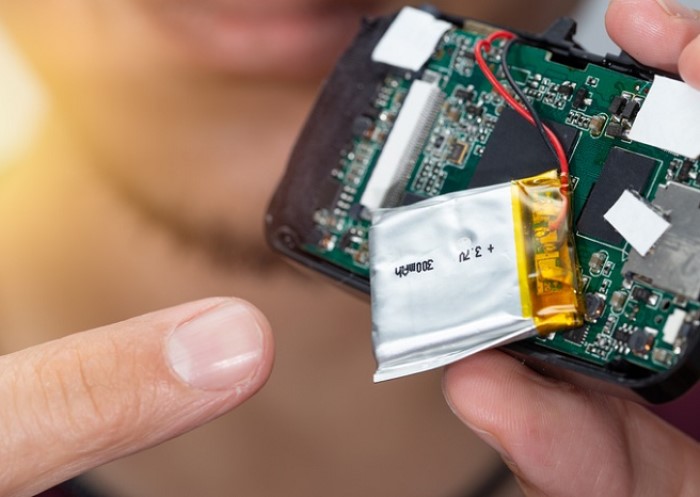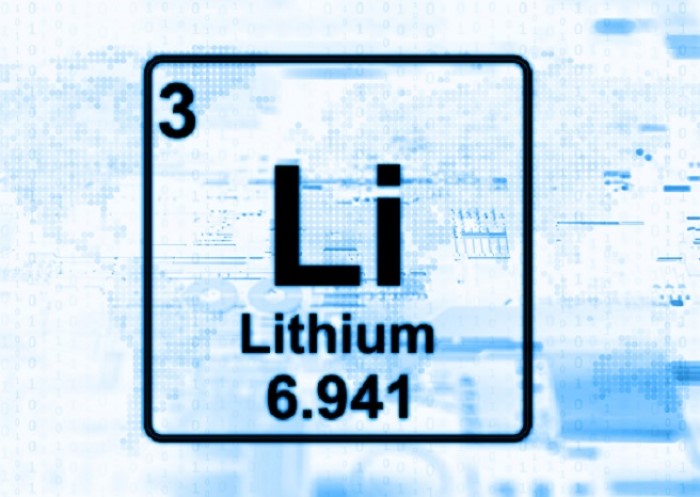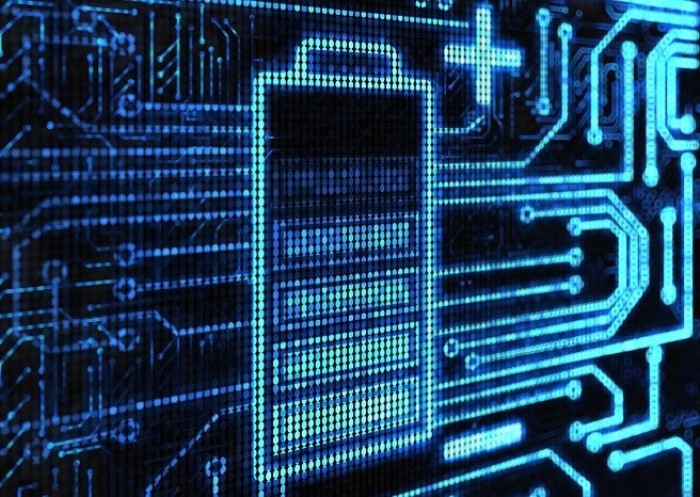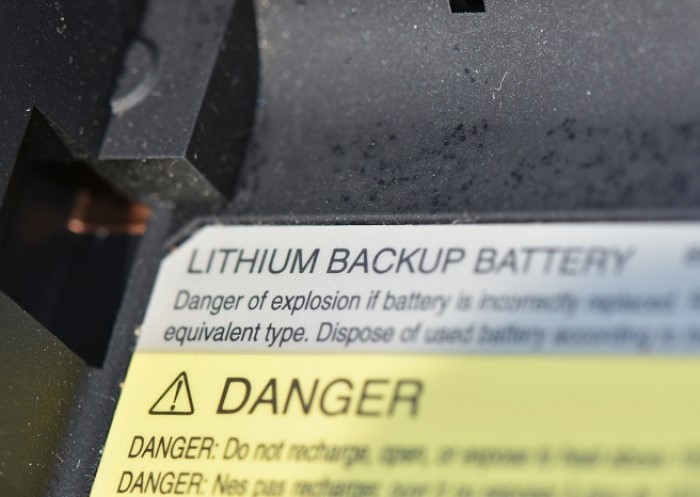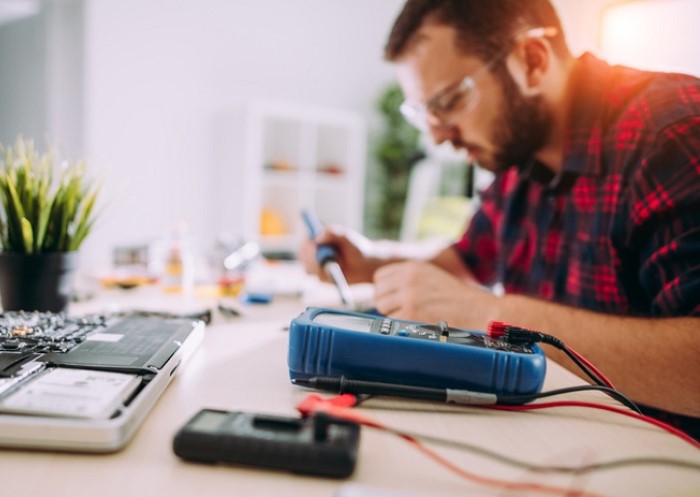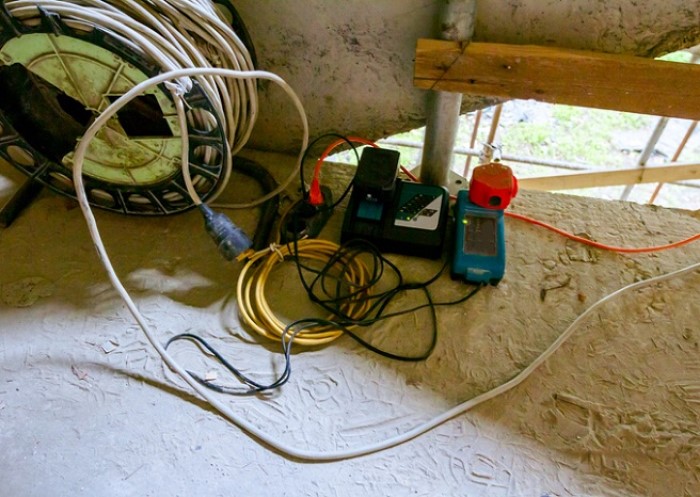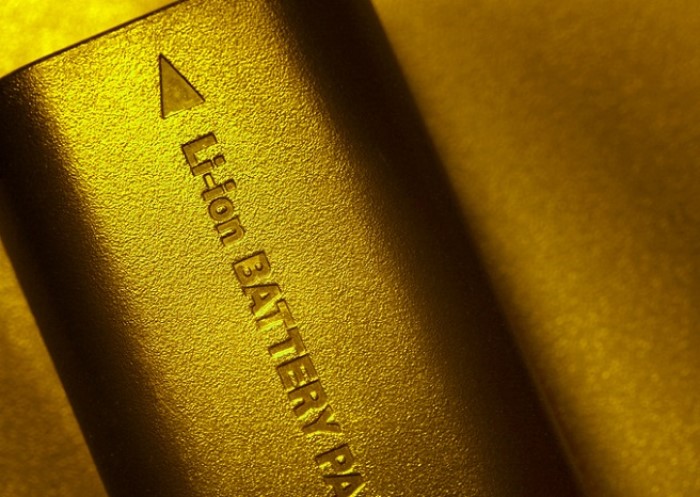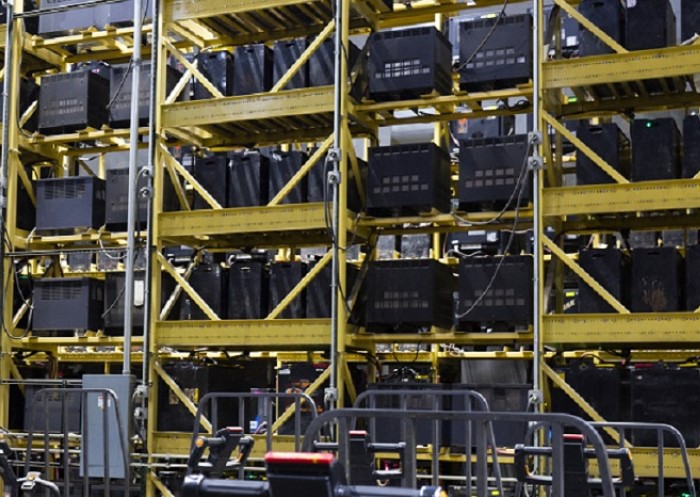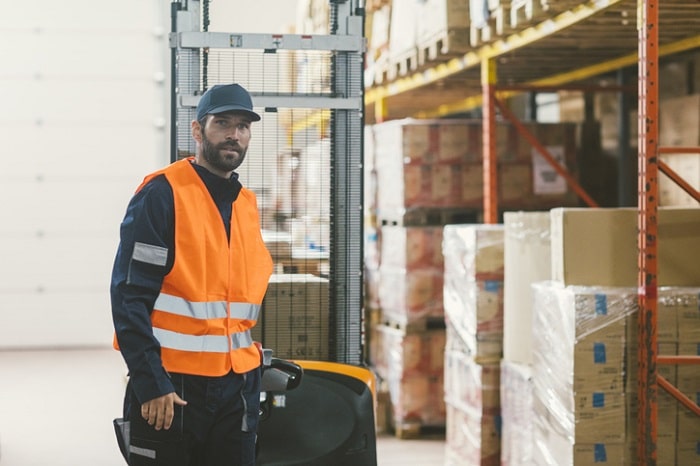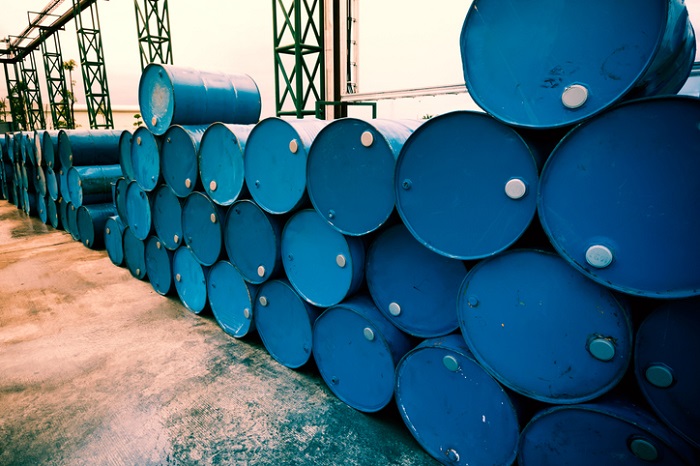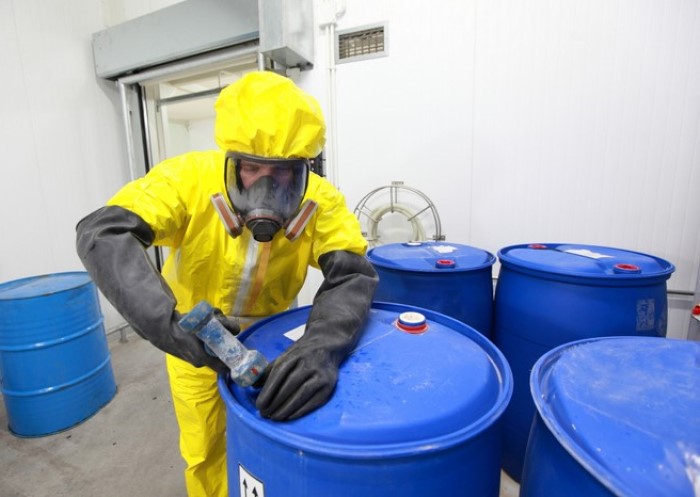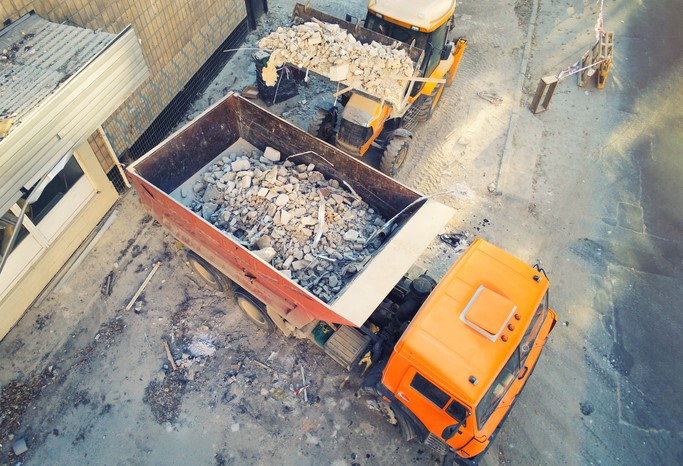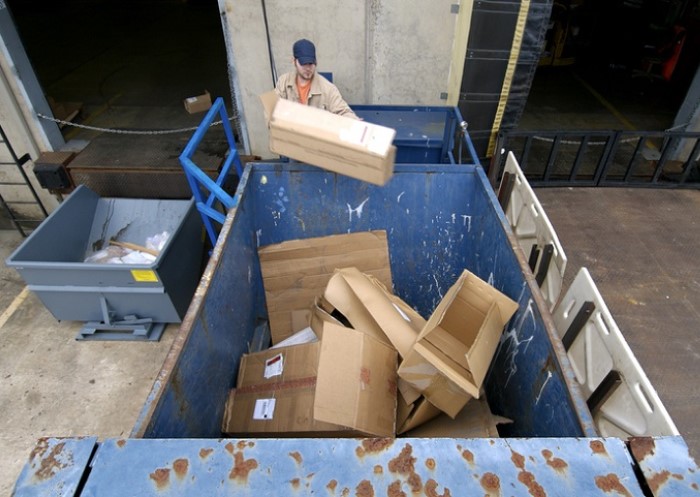Table of contents
Lithium-ion batteries contain raw materials that are not only valuable but can also be potentially harmful to the environment. For this reason, the proper disposal of lithium-ion batteries and the recycling of their components is incredibly important. In our guide, you will learn more about what needs to be considered when it comes to effective disposal and recycling of lithium-ion batteries.
Lithium-ion battery disposal: Hazards to watch out for
Lithium-ion batteries should never be thrown away with regular household waste. Why? The main reason boils down to safety. Due to their lithium content, lithium-ion batteries have high energy density. Yet this same lithium contained inside these batteries is highly reactive — especially when exposed to water or when the ambient temperature is too high. Consequently, there is a significant fire risk, especially if a damaged battery comes into contact with water.
If water penetrates a lithium-ion battery that has not been disposed of in accordance with government regulations, or if a thermal runaway (a dangerous chain reaction where the battery’s temperature rapidly increases) occurs, the result is a lithium fire that is extremely difficult to extinguish or an explosion. The batteries can release gaseous toxins. These pose a danger to humans, animals, and the environment. For this reason, lithium-ion battery disposal regulations must be strictly adhered to. This is true, not only for disposal but also for the storage of lithium-ion batteries.
Who is responsible for the disposal and recycling of lithium-ion batteries?
In the UK, the disposal of lithium-ion batteries is governed by several key regulations, including the Battery Regulations 2009, the Waste Batteries and Accumulators Regulations 2009, and the Waste Electrical and Electronic Equipment (WEEE) Directive. These laws aim to minimise environmental impact and promote recycling by placing responsibilities on both retailers and manufacturers. Retailers are required to provide collection points for used batteries, making it convenient for consumers to recycle.
Manufacturers, on the other hand, are responsible for financing the collection, treatment, and recycling of waste batteries. They are also required to design products that are easier to recycle and provide information to consumers about proper disposal. The WEEE Directive works in conjunction with the Battery Regulations to set targets for the collection, treatment, and recycling of electrical and electronic waste, including batteries. Together, these regulations ensure that lithium-ion batteries are safely disposed of and efficiently recycled, contributing to environmental protection and resource conservation in the UK.
Lithium-ion batteries can be disposed of in collection boxes at retailers where electronic devices are sold, at recycling centres, or at the take-back points of the manufacturers themselves.
Additionally, batteries can also be disposed of in boxes provided for this purpose or at local waste management companies. The website, RecycleNow, provides general information on the disposal of batteries for those living in the UK; however, for detailed disposal regulations on lithium batteries, it is best to contact your local council.
In the UK, distributors and retailers that sell or supply more than 32kg of batteries per year must participate in the take-back scheme. This means they must provide a free collection point for batteries at their premises.
For businesses working with batteries on an industrial scale, it might be worthwhile to consider working directly with one of the many specialist recycling and disposal centres operating across the UK. They may be able to negotiate an agreement with you when it comes to disposal and recycling processes.
Please note: It is not safe to send damaged lithium-ion batteries for disposal by post. If you think a battery might be damaged, consider bringing it to a processing centre directly. Signs of damage include overheating, leaking battery fluid or expansion/inflation of the battery.
How do you know if batteries contain lithium?
Unfortunately, there is no uniform labelling for lithium-ion batteries yet. Lithium-ion and lead-acid batteries can be distinguished primarily by their physical appearance and labelling. Lead-acid batteries are typically larger, heavier, and rectangular with vented lids for water addition, while lithium-ion batteries are smaller, lighter, and come in various shapes without vented covers. The labelling also differs significantly. For example, lead-acid batteries often have warnings about sulfuric acid and ventilation, whereas lithium-ion batteries display information about chemical composition, energy capacity, and safety compliance symbols like UL or CE.
Disposing of lithium-ion batteries
All lithium-ion batteries, regardless of size, should display the ‘Crossed out wheelie bin’ symbol. This indicates that they should not be disposed of in household waste. Proper recycling of lithium-ion batteries prevents toxic chemicals from leaking into the environment, allows for the recovery of valuable metals and resources, and avoids safety hazards.
How are lithium-ion batteries from smartphones and small electronic devices disposed of?
Lithium-ion batteries in smartphones and small electronic devices are considered ‘portable’ batteries. Before disposing of these batteries, you should tape over the terminals to prevent short circuits. Then, place the batteries in a plastic bag to transport them correctly. You can return them to a retailer or the manufacturer for disposal. Alternatively, you can take them to a local supermarket or any large shop that sells over 32 kg of batteries a year, as these locations are required to have collection points for portable batteries.
How are larger lithium-ion batteries disposed of?
Larger lithium-ion batteries, such as those found in e-bikes, power tools, or energy storage systems, are classified as miscellaneous dangerous goods (Class 9) and require special handling. These batteries should be taken to your local household waste recycling centre, where they will be segregated from other waste. If you’re purchasing a new product with a large lithium-ion battery, retailers are required to accept the old one for free on a like-for-like basis, whether bought in-store or online.
It is recommended that you contact any of the waste management centres located in the UK which specialise in Li-ion battery disposal and recycling. The company will usually provide you with a specialist waste container with wrapping in which you can safely store lithium-ion batteries until they are ready for collection.
Permanently installed lithium-ion batteries
Some Lithium-ion batteries are permanently installed within devices. When the battery is part of the device and cannot be taken out, for example items such as calculators and e-cigarettes, these need to be treated as electrical products. Consumers are not obliged to remove permanently installed batteries themselves. Defective mobile devices or tools that have a permanently installed battery should be handed over to the manufacturer or dealer directly or by post. The manufacturer is then obliged to dispose of the lithium-ion battery in accordance with regulations.
Why should you consider recycling lithium-ion batteries?
A second reason to dispose of lithium-ion batteries properly is that they can then be sent for recycling. Recycling lithium-ion batteries allows valuable raw materials to be recovered, however, it is a complex process that remains a technological challenge. There are many reasons for this:
- Many different raw materials are interconnected in rechargeable batteries.
- The structure of lithium-ion batteries differs depending on the manufacturer, device and model.
- As a result, uniform, automated recycling processes are rarely possible and battery disassembly is usually done by hand.
Every cell of a lithium-ion battery is made up of four components, each of which can contain different materials.
| Component | Possible materials |
|---|---|
| Positive Electrode | Lithium + Cobalt Lithium + Manganese Lithium + Iron Lithium + Nickel + Cobalt + Aluminium Lithium + Nickel + Manganese + Cobalt |
| Negative Electrode | Graphite Tin Lithium + Titanium |
| Electrolyte | Various dissolved lithium salts |
| Separator | Various porous polymers |
Most valuable metals are found in the electrodes of Li-ion cells. Recovering these raw materials is possible, but not easy, as they occur in chemical compounds and form units in a very small space. This makes for a complex and expensive recovery process. Nevertheless, the recycling of lithium-ion batteries and accumulators is important in terms of environmental protection and resource conservation.
In contrast, the situation is different for the other components of a lithium-ion battery, such as steel and plastic casings and cables, which are usually made of copper. These can already be easily recycled.
FAQs on lithium-ion battery disposal
Manufacturers and retailers that sell or supply more than 32 kg of portable batteries per year must provide a collection point for portable batteries on their premises. Further collection points can usually be found at recycling centres. Some private businesses and lithium-ion battery recycling centres also offer home or business collection.
If a lithium-ion battery is permanently installed in a device, the battery cannot be changed and the device itself must be disposed of. Never try to remove the battery yourself. Instead, take the device to your local collection point or recycling centre for disposal. The manufacturer or retailer of the device is also obliged to provide a take-back service for the item and battery.
When disposing of lithium-ion batteries, never throw them in regular household waste. Also avoid damaging them or exposing them to high heat or fire to avoid potential hazards. Never store or transport them with metal objects, and don’t mix them with other battery types. Instead, take them to designated recycling centers or collection points for proper, safe disposal to protect the environment and prevent potential fires or explosions.
Image source:
© gettyimages.de – coffeekai

